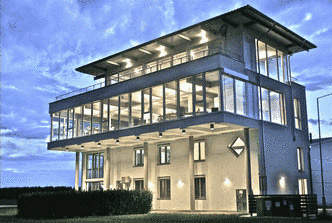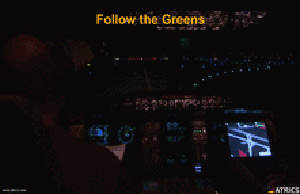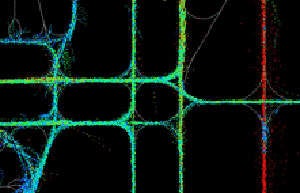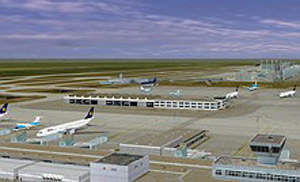ATRiCS develops software for demanding air traffic control applications for use at airports. The company is a leader in innovation for improving traffic efficiency and controller productivity.
Using its surface management (SMAN) technology, ATRiCS is the recognised leading expert for automated routing, guidance and control (A-SMGCS levels I through V) as well as for advanced prediction and planning (A-CDM).
The product suite is completed by a highly configurable and efficient 3D tower and cockpit simulation and a suite of airport traffic performance analysis tools. ATRiCS is based in Freiburg, Germany.
Surface movement management system for airports
ATRiCS surface manager (SMAN) integrates an airport’s existing surveillance and lighting infrastructure with a truly coherent surface movement management system.
For each mobile located in the movement area, SMAN proposes an individual taxi route to the controller. To save controllers from the tedious task of manually modifying route proposals, SMAN computes any route from scratch, taking into account the current traffic situation, preferences and constraints. At any time, the controller can change the mobile’s destination or route.
During taxi, SMAN automatically switches the taxiway centreline lights to unambiguously indicate the assigned taxi route to the pilots. At any time, the controller can manually control stop bars and illuminate taxi route sections to statically indicate admissible taxiways to pilots and drivers.
Depending on the capability of the existing infrastructure, ATRiCS can provide and integrate additional low cost sensors to locally improve the surveillance data quality. Together with its industry partners, it can also retrofit the lighting system to provide individual lamp control and monitoring functions.
With ATRiCS track data analyser (TRAZER), you can also automatically analyse and assess all relevant performance indicators entailed in your airport surveillance data.
SMAN is operational at Incheon International Airport, Korea and has been tested successfully in field trials at Frankfurt Airport.
Pre-departure sequence planner for airports
The pre-departure sequence planner (PSQP) balances the departure demand with the available runway capacity. In case of a predicted over-demand at the runway, the traffic flow is automatically regulated by generating segregated target start-up approval times (TSAT) and taking into account:
- Air traffic flow management constraints (CTOTs)
- Scheduled departure times
- Taxi times
- Hold-over times
- Airline preferences
- Position conflicts
- Tower freeze
Advanced taxi time calculation considerably improves the accuracy of predicted on-block and take-off times. It is a key enabler for the effective integration of arrival and departure management with turnaround management. This makes PSQP a key support for an effective collaborative decision making (CDM) process. It computes for each aircraft movement and individual taxi time and the calculation takes into account:
- Runway capacity
- Taxi velocities
- Preferred taxi routes
- Push-back and engine start-up times
- Traffic conflicts (queuing and converging traffic)
- Runway occupancy times (take-off, landing and crossing)
- De-icing
PSQP has been developed in cooperation with Fraport and DFS and is supporting the CDM process at Frankfurt Airport.
Tower and cockpit simulators
The ATRiCS tower and cockpit simulator (TOPSIM) is a generic simulation platform that can be configured to model any airport and airspace infrastructure. It can easily be set up on-site and can operate without any pseudo pilots.
When introducing new systems and higher levels of automation in the control tower, TOPSIM supports project teams by allowing continuous feedback from controllers and pilots. This helps to predict the impact of such changes from the very beginning and avoids economic loss in the event of an ineffective concept or functionality.
After the introduction of new systems and procedures, controllers have to receive ab-initio or refresher training to continuously maintain a high level of competence for emergencies, system failures and excessive traffic demand.
TOPSIM is in use at Zurich Airport Apron Control since 2005 to train apron controllers.
Airport consulting and software development
At every airport there is still a large potential for the improvement of key performance areas such as safety, capacity, efficiency and cost-effectiveness. ATRiCS helps to develop ideas and concepts and to find out their actual benefits as well as their implementation costs using its in-depth know-how of air traffic management processes and technologies.
In some projects it is economically advantageous to develop an in-house solution instead of buying and integrating a commercially available product. In such cases a reliable and flexible software development team is required that combines excellent analytic skills with outstanding IT competences and a very strong background in the aviation domain.





